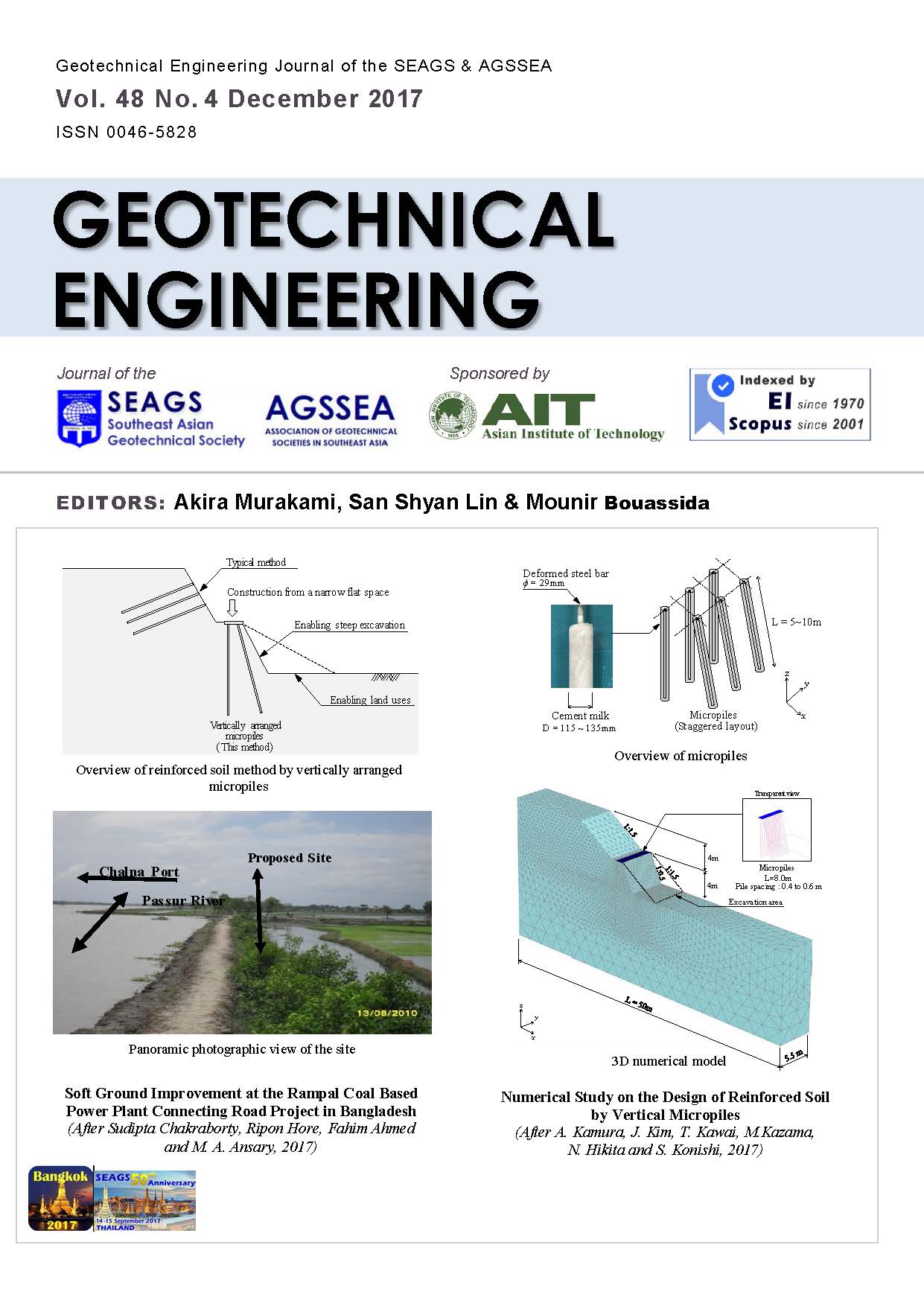Numerical Modelling of Ground Subsidence at an Underground Coal Gasification Site
Main Article Content
Abstract
A detailed numerical modelling study was carried out to represent geotechnical aspects of the Wieczorek underground coal gasification (UCG) site in Poland. A coupled thermos-mechanical numerical model was created to represent a single coal burning panel. The coal burning process was simulated by modifying the energy balance equation with an additional term related to the calorific value of coal as a source. Temperature dependent material properties were assigned to the coupled thermal-mechanical model according to published data. In the model, the burning zone spread about 7.5m laterally after 20 days of burning. Results from the coupled model were used to gauge a worst-case scenario in terms of the potential size of a formed cavity. This data was used within a less computationally expensive mechanicalonly numerical model in order to evaluate the ground subsidence caused by the worst-case scenario for single and multiple UCG burning panels. The single panel burning resulted in 23mm of ground subsidence at the top of the model after long term coal burning. The ground subsidence measured at the top of the model, at the center point of the gasification arrangement, was approximately 72mm when five panels were burnt with an edge to edge panel distance of 5m; this was increased to 85mm for seven panels. The numerical modelling results have implications to the industrial application of UCG.
Article Details

This work is licensed under a Creative Commons Attribution-NonCommercial-NoDerivatives 4.0 International License.
Copyright © 2019 Association of Geotechnical Societies in Southeast Asia (AGSSEA) - Southeast Asian Geotechnical Society (SEAGS).


